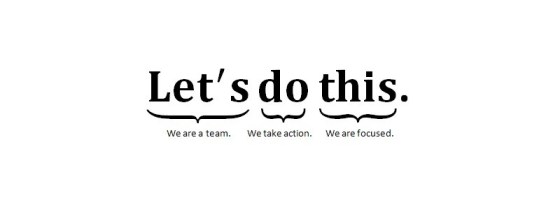Not another canned response.
After a bit of overnight thought, the team has banded together and answered some of the questions we have received, (or are expecting to receive), regarding COVID-19 and the impact on business. We understand it may be a stressful time and that’s ok. It’s also important to stress on what you can control, remain positive, focused and take deliberate actions in your business. Communicate your worries and concerns, whether that be with your partners, business partners, management, family, or us so you can gain perspective, make decisions and take action.
Quality information is key, so here is some general information to get started:
Firstly, a few points on mental and physical wellbeing:
- Spend time in places that feel safe and comfortable as much as possible.
- Tell yourself that how you are feeling is a normal reaction and will pass – it is nothing to be afraid of.
- Reach out to your usual supports – family and whānau, friends and workmates. Sharing how we feel and offering support to others is important.
- Keep to usual routines – mealtimes, bedtime, exercise and so on.
- Keep active – going to work, doing usual leisure activities and seeing friends can improve general wellbeing and help distract from distressing feelings.
It’s important to look after yourself first, so you can look after your family and friends, the community you live in, and the local businesses that are part of that community.
How does it affect my business?
- Sales loss and overall reduction in activity
- Staff loss/loss of productivity
- Supply chain constraint (materials/subcontractors)
All result in cash flow issues.
Should I talk to the bank?
If you’re worried, yes. Communication early is easiest. Ask your banker about:
- Temporary interest-only debt servicing
- Refinancing to push payment periods out
- Short-term overdrafts or packages
Cash is a stopgap, temporary solution that can help weather storms. It alone won’t solve problems and needs multiple strategies behind it. Plan and forecast cashflow so you know what actions are required when. We can help with this.
What is the wage subsidy?
Subsidy for wages paid to the employer as a lump sum to help mitigate laying off staff or reducing their paid hours. Calculated as:
- 20 hours or more per week: $585.80 x 12 weeks = $7,029.60
- Less than 20 hours per week: $350 x 12 weeks = $4,200.00
Maximum of $150,000 per business. If you calculate your entitlement to be more, then you can deal directly on a case-by-case.
Can I get the subsidy?
- Your business must be registered and operating in New Zealand
- Your employees must be legally working in New Zealand
- The business must have experienced a minimum 30% decline in actual or predicted revenue over the period of a month when compared with the same month last year, and that decline is related to COVID-19 (We can help you with this)
- your business must have taken active steps to mitigate the impact of COVID-19. For example, getting in touch with your bank.
- you must make the best efforts to retain employees and pay them a minimum of 80% of their normal income for the subsidised period, i.e. moving some/all employees to a four-day working week.
- The application may be subject to an audit, providing false or misleading information may be investigated for fraud.
Have a read of the MSD factsheet for more information.
What are considered active steps to mitigate the impact of COVID-19?
The application for the wage subsidy references this as criteria and considers this to be implementing a business continuity plan alongside:
- Consulting your bank
- Consulting your Chamber of Commerce
- Consulting a relevant industry association
- Consulting you Regional Business Partner Program
What is the difference between the wage subsidy and the leave subsidy?
The wage subsidy is to support you if you face laying off staff or reducing their hours due to COVID-19. It is a one-off payment and a business can only apply/receive once.
The leave payment is to support people who need to self-isolate or cannot work because they’re sick with COVID-19. The payment will be available for 8 weeks from 17 March 2020. Employers receive the leave payment in lump sum and pass on to their employee. Employers can apply on behalf of employees more than once on an “as needed” basis. Also applies to sole traders, contractors, self-employed and shareholder-employees.
Leave payments are lump sum amounts at the same rates as the wage subsidy above ($585.50/$350) but for a period of 2 weeks only.
What happens if I have to lay staff off?
The subsidy states you have to make the best efforts to retain employees and pay them a minimum of 80% of their normal income for the 12 week subsidised period.
Do I have to pay my upcoming tax?
Yes. However, you can enter into a payment arrangement with Inland Revenue. For payments due from 14 February 2020 Inland Revenue has the ability to remit (waive) use of money interest in these arrangements. There are no further late payment penalties once an arrangement is reached and upheld. As above, action is key to take advantage of this.
What are the tax changes and how does it affect me?
The Government have announced four more tax changes to help businesses:
- To increase the provisional tax threshold from $2,500 to $5,000
- To increase small asset depreciation threshold from $500 to $1,000, and temporarily to $5,000 for assets purchased between 17 March 2020 and 16 March 2021.
- To allow depreciation on commercial property and industrial buildings until 2023/24 tax year at 2% diminishing value.
- Removing the hours test from the In-Work Tax Credit
None of these will have an immediate affect on your cash, but the trickle-down will help with tax relief over time.
If it comes to it, do I go on the unemployment benefit?
If you’re going to be without an income, it’s best to apply for financial assistance as soon as possible. Click here for more information.
HR rules? Redundancy/Restructure?
To make an employee redundant you are required to go through the full restructure process. The process isn’t prescribed exactly, but case law has helped to establish best practice. The steps and suggested time frames are outlined here.
You can call the Government Employer Line on 0800 778 008 or visit a WINZ office for free, confidential support around redundancy.
When/how can I cut costs?
Review your existing cost structure – what is contributing to business purpose/goal? Justify expenditure at a line-by-line level and lean up where possible.
Bottom-up budgeting is a good technique – we can help you with this.
Bigger strategies for surviving?
Action is the most important thing. Sitting and waiting won’t help your business. Multiple strategies will have the best success and a brainstorm with us, management, advisors etc will help immensely to create direction. Quick things to consider:
- Chase work, it will be there, just not as easily
- Look at your supply chain
- Engage with all stakeholders (customers, employees, suppliers, bankers, other owners), frequently
- Communicate clearly with employees to avoid confusion or assumptions
- Look at your cashflow and finances
- Review WIP, debtors, creditors
Plan, and contemplate a contingency – write it down or draw a picture.
If it comes to it, how do I shut down my business?
There are a few different possibilities here, all of which we’d suggest seeking further advice on:
- Short/long form liquidations
- Administration or receivership
- Cease trading
- Sell as a going concern
- Sell assets on liquidation basis
It’s important to consider all options, where risk, value, and opportunities lie, and you should consult others on this. Consider obligations such as limited guarantees, personal guarantees, GSA’s held, PPSR registrations.
Rent – conversation for tenants and landlords
Communicate early and ask questions. Work together, the relationship is entirely interdependent.
Need more info?
We’re here to help, so please don’t hesitate to get in touch with us.
Email: hey@outsideaccounting.co.nz
Phone: 04 889 2975
For the straight facts, head here: Covid-19: Information for businesses.
Keep your heads up and stay well,
Your Outside team and, of course, Ruby!
Contact
Address: Level 2, 182 Vivian Street, Te Aro, Wellington 6011, New Zealand
Mail: PO Box 24-457, Wellington 6142
Phone: 04 889 2975




